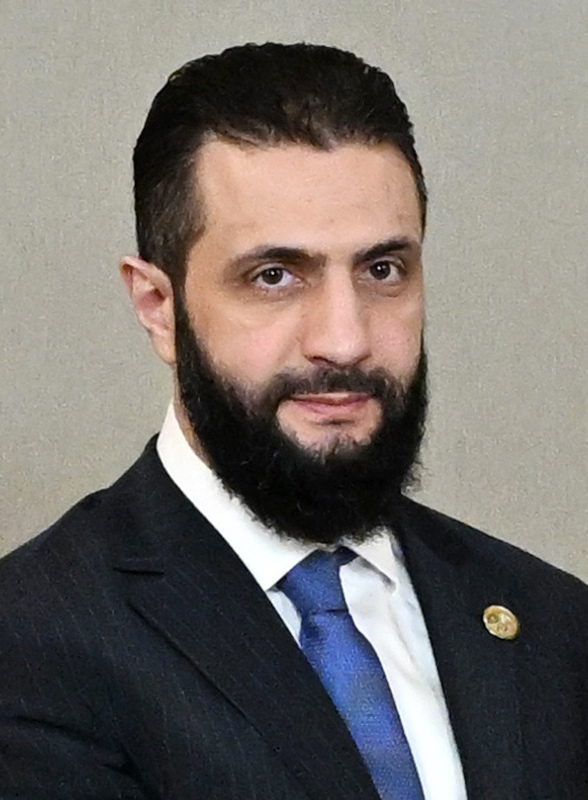Ahmed al-Sharaa, formerly known as Abu Mohammad al-Jolani, is the interim president of Syria, appointed in January 2025 after the collapse of Bashar al-Assad’s regime. His ascent marks one of the most dramatic political transformations of the post-Arab Spring era, as he moved from militant commander to head of state.
Birth: 29 October 1982 (Age: 43)
Source of Influence: Political
Influence: Political
School of Thought: Sunni
Status: Not featured in current year
Ahmed al-Sharaa, formerly known as Abu Mohammad al-Jolani, is the interim president of Syria, appointed in January 2025 after the collapse of Bashar al-Assad’s regime. His ascent marks one of the most dramatic political transformations of the post-Arab Spring era, as he moved from militant commander to head of state.
Rise to Power: Al-Sharaa first came to prominence during the Iraq War, where he fought with al-Qaeda in Iraq. In 2012 he founded the al-Nusra Front, an al-Qaeda affiliate that became one of Syria’s most powerful rebel groups. In 2016, he severed formal ties with al-Qaeda and rebranded his faction as Hayat Tahrir al-Sham (HTS), positioning it as a Syrian nationalist force. Despite this, he remained on US and UN sanctions lists, with a $10 million bounty on his head until his political transition.
From HTS Leader to President: Following the regime’s collapse in December 2024, Al-Sharaa emerged as the consensus choice of opposition forces. In January 2025, he was formally named interim president at the Syrian Revolution Victory Conference, pledging to unify the country, end factionalism, and rebuild shattered institutions.
International Engagement: In September 2025, he became the first Syrian leader in nearly six decades to address the UN General Assembly, where he emphasized reconstruction, reconciliation, lifting sanctions, and restoring Syria’s international role. He pledged to seek peaceful coexistence with neighbors, voiced support for Palestinian rights, and called for a new era of diplomacy.
Challenges Ahead: Al-Sharaa faces the task of reconciling his militant past with his role as statesman. Reports of sectarian tensions and his history of authoritarian governance in Idlib remain points of criticism. Nevertheless, his leadership signals a new and uncertain chapter for Syria.
News about President Ahmed Al-Sharaa
- No approved news items yet.



